Will Rhinoplasty Scars Disappear After the Surgery?
If you are thinking of getting a nose job, you are not the only one. According to The Harley report, rhinoplasty is one of the five most common cosmetic surgery procedures in the United Kingdom.
But why are you still holding back? Isn’t it the rhinoplasty scar you are afraid of? We understand nose surgery is a big decision, so it is completely logical to consider every aspect of rhinoplasty before going for it.
That’s why, we are here to guide you on this. Are the scars from rhinoplasty common? Does every rhinoplasty procedure leave a scar? Are these scars permanent? Let’s find an answer to all the rhinoplasty scar-related queries that may be holding you back.

Understanding Rhinoplasty Procedures
Before we dive into the details of rhinoplasty scars, it’s important to understand what rhinoplasty is and why people opt for this procedure. Rhinoplasty, often referred to as a “nose job,” is a surgical procedure designed to reshape the nose. It can be performed for both cosmetic and functional reasons.
Cosmetic rhinoplasty aims to enhance the aesthetics of the nose, addressing concerns like a prominent hump, a wide bridge, a drooping tip, or other features that individuals may wish to change. On the other hand, functional rhinoplasty focuses on improving breathing difficulties and airflow through the nasal passages, addressing issues like a deviated septum or other structural problems.
Mr. Golchin uses general anaesthesia or in some cases, local anaesthesia along with intravenous sedation is performed.
Then, Dr Golchin makes a small incision to assess the structure of your bones. These incisions are made either inside the nostrils (closed rhinoplasty) or externally (open rhinoplasty) on the columella and then planned alterations are carried out.
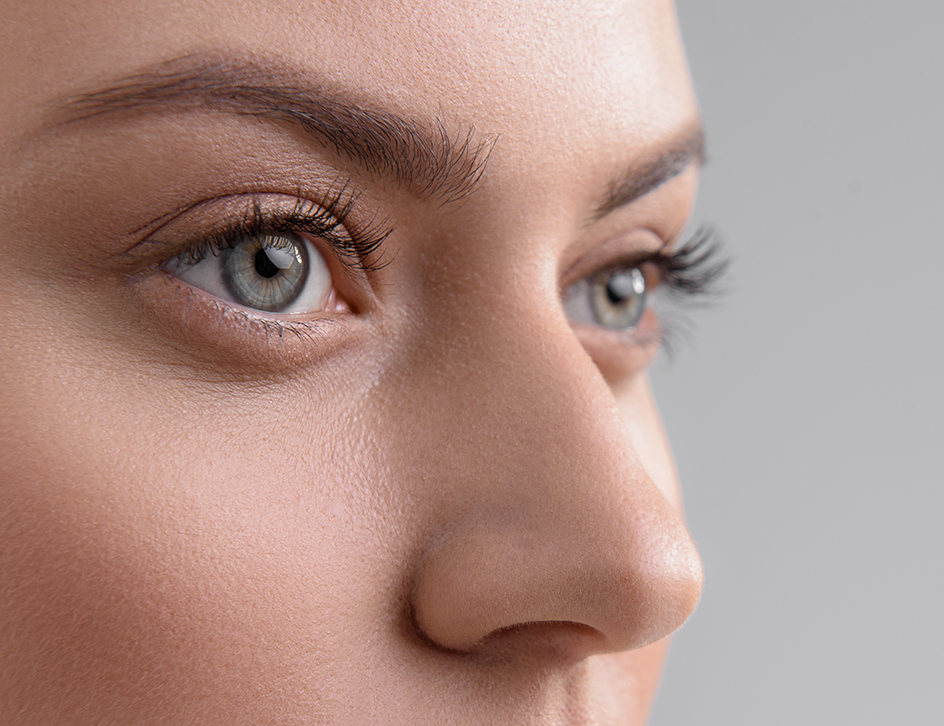
Is scarring common After Rhinoplasty?
The thought of visible scars can be a cause of concern for anyone considering rhinoplasty. After all, a nose job is all about enhancing the aesthetics of your nose, and nobody wants to face the end result of a potentially unsightly scar.
If you are hesitant about getting a nose job done due to scarring, then the good news is there is a minimal chance of scarring. The reason is that rhinoplasty has come a long way, and advancements in surgical techniques have minimised risk of scarring.
To further understand the rhinoplasty procedure and the intensity of scarring, you should consider the different types of rhinoplasty. The type of nose job impacts the likelihood of scarring after the rhinoplasty surgery.
Closed Rhinoplasty
This is the type of rhinoplasty is mostly preferred by Mr. Golchin. The reason is that closed rhinoplasty is a less invasive rhinoplasty procedure and leaves no scars on the exterior. In closed rhinoplasty, rhinoplasty surgeons make all incisions inside the nostrils, which means the visible part of your nose remains free of scars.
The alterations are made under the skin where scarring will only be visible if you tilt back your head so the underside of your nose is visible. As this rhinoplasty type involves less severe incisions, there will be less swelling, less pain, and quick recovery.
However, this type of rhinoplasty is only suitable if you want minimal structural changes in your nose.

Open Rhinoplasty
If you want extensive work to be done on your nose, rhinoplasty surgeons will recommend this type of rhinoplasty. However, Mr. Golchin only suggests open rhinoplasty to patients requiring more structural changes or those with tip abnormalities as this process is heavily invasive and is not fully “scar-free”.
In this rhinoplasty procedure, incisions are made in an area between your nostrils and underneath your nose, which is called the columella.
Mr. Golchin then removes a part of the skin to reach the nasal bones and cartilage where structural changes are made to get your desired shape of nose. Once the job is done, he sutures up the columella. Then, he tapes the nose to encourage stabilisation. After taping, a splint is placed that is sculpted specifically for the patient to protect the healing tissues. While there is an external incision, it is usually well-concealed and can heal to be nearly invisible.
Though a closed rhinoplasty procedure involves almost zero percent risk of visible scarring, not every patient can get their desired shape of the nose with it. Especially people with structural deformities or collapsed valves from hump removal.

Where Does a Scar Develop?
In open surgery, as we have discussed, rhinoplasty surgeons create incisions at the columella, part of your nasal septum. So this part of your nose will likely see scarring.
Does a Rhinoplasty Scar Ever disappear?
Technology is advancing at a rapid pace that there is now substantially decreased chance of scaring after nose reshaping surgery. Even if a scar forms, it is minimal and usually goes away with time.
However, the extent of scarring, its visibility, and how it evolves over time can vary from person to person. Several factors influence how rhinoplasty surgery scars may appear and fade, which we will explain in detail below.

What Factors Affect the Scar Formation?
Rhinoplasty Surgeon Skill
This is the most critical part of nose reshaping surgery. An amateur can create a visible scar, even in closed rhinoplasty surgery. Mr Kambiz Golchin is a famous rhinoplasty surgeon in London for his meticulous process and incredible results. He is known for his skill in making precise incisions, professional suturing, and ensuring minimal tissue trauma, which can lead to better healing and less noticeable scars.
Postoperative Care
Proper postoperative care is essential for scar healing. Following your surgeon’s instructions for wound care and avoiding any trauma to the surgical area, you can speed up the scar-disappearing process. Mr. Golchin sometimes employs medications during the postoperative phase to diminish the formation of scar tissue. In addition, he permits sculpting of the nasal tip for months after the rhinoplasty surgery to enhance the recovery process.
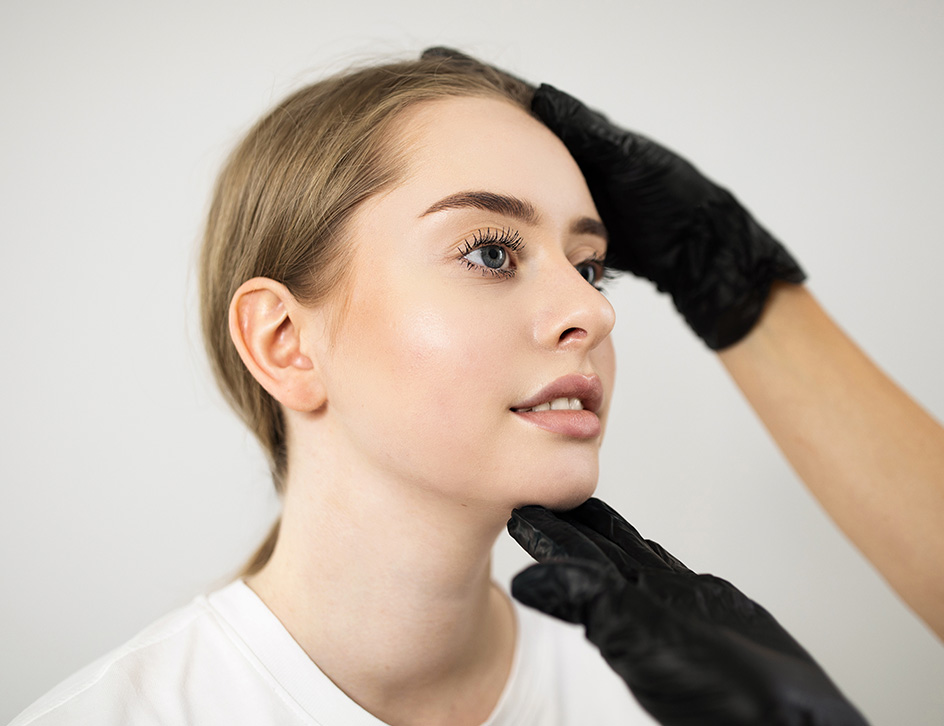
Genetics
Genetics can also play a role in how scars heal. Some people are genetically predisposed to develop less prominent scars, while others may have a tendency to form hypertrophic or keloid scars, which are raised and thicker than usual.
Skin Type
Your skin type also affects what sort of scar you might have after the surgery. If you have a darker skin tone, you may experience hyperpigmentation after the nose job. On the other hand, if you have a lighter skin tone, you are most likely to get hypopigmentation around the incision site. Likewise, the healing process also depends on your skin type and its natural healing capabilities.

What Causes Scars to Get Worse?
Though most scars fade away with time, certain factors can interrupt the natural healing process. For instance:
Infection
If you get any sort of infection at the incision site, the wound-healing process will be reduced. Sometimes, the cut increases in size as the infection pulls away the skin. All your body energy will be utilised in fighting off the bacteria, instead of healing the wound. The longer a wound stays, the more time the scar will take to disappear.
Sun Exposure
UV rays are also contributors to prolonged scarring. The more you expose your incision to the sun, the more pigmentation it will create, ultimately deepening the scar. That’s why, Mr Golchin recommends avoiding direct sun exposure for a few months after rhinoplasty surgery.
Smoking
Your body needs plenty of oxygen to heal the wound and diminish the scar. When you smoke, the oxygen concentration in your body decreases, which in turn, negatively effects the natural healing process, increasing the risk of developing scars.
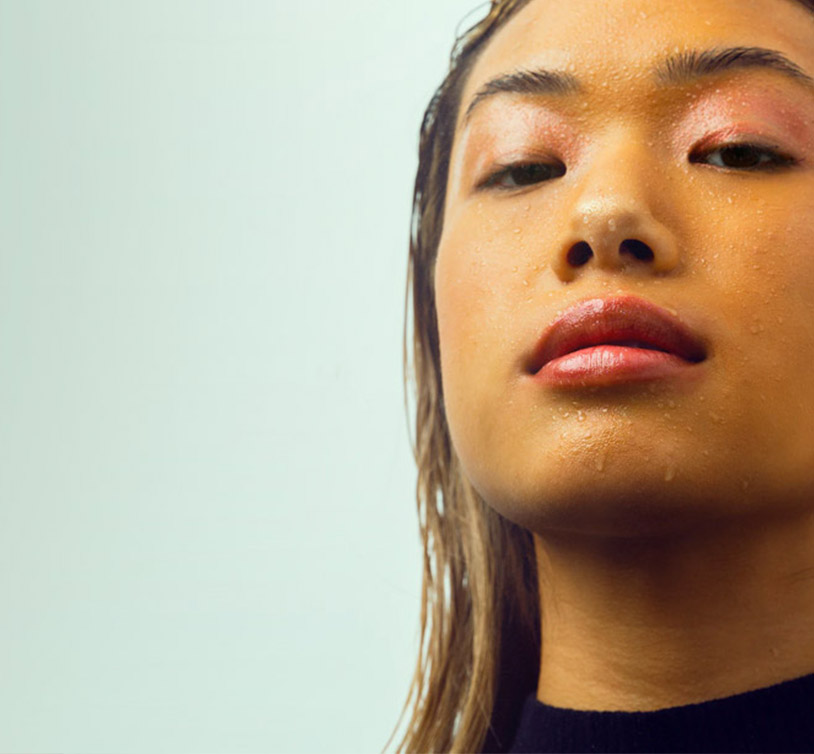
Damaged Skin
The condition of your skin can significantly influence the quality of your healing and the extent of scar tissue. When your skin is dry and cracked, it is challenging for your body to effectively heal the incision in the septum. On the other hand, well-moisturised skin tends to have fewer complications in this regard.
Age Factor
Natural healing processes tend to slow down as you grow older, but this pace varies from person to person. So, it’s essential to consider your age when assessing the potential outcome of a visible scar. You may not heal as efficiently at 60 as you would at 20.
Allergic Reactions
Allergies to any substances used at the incision site or in postoperative supplies can lead to irritation, rashes, or infections in the wound. If you don’t address these issues promptly, they can contribute to the development of larger and more noticeable scars.
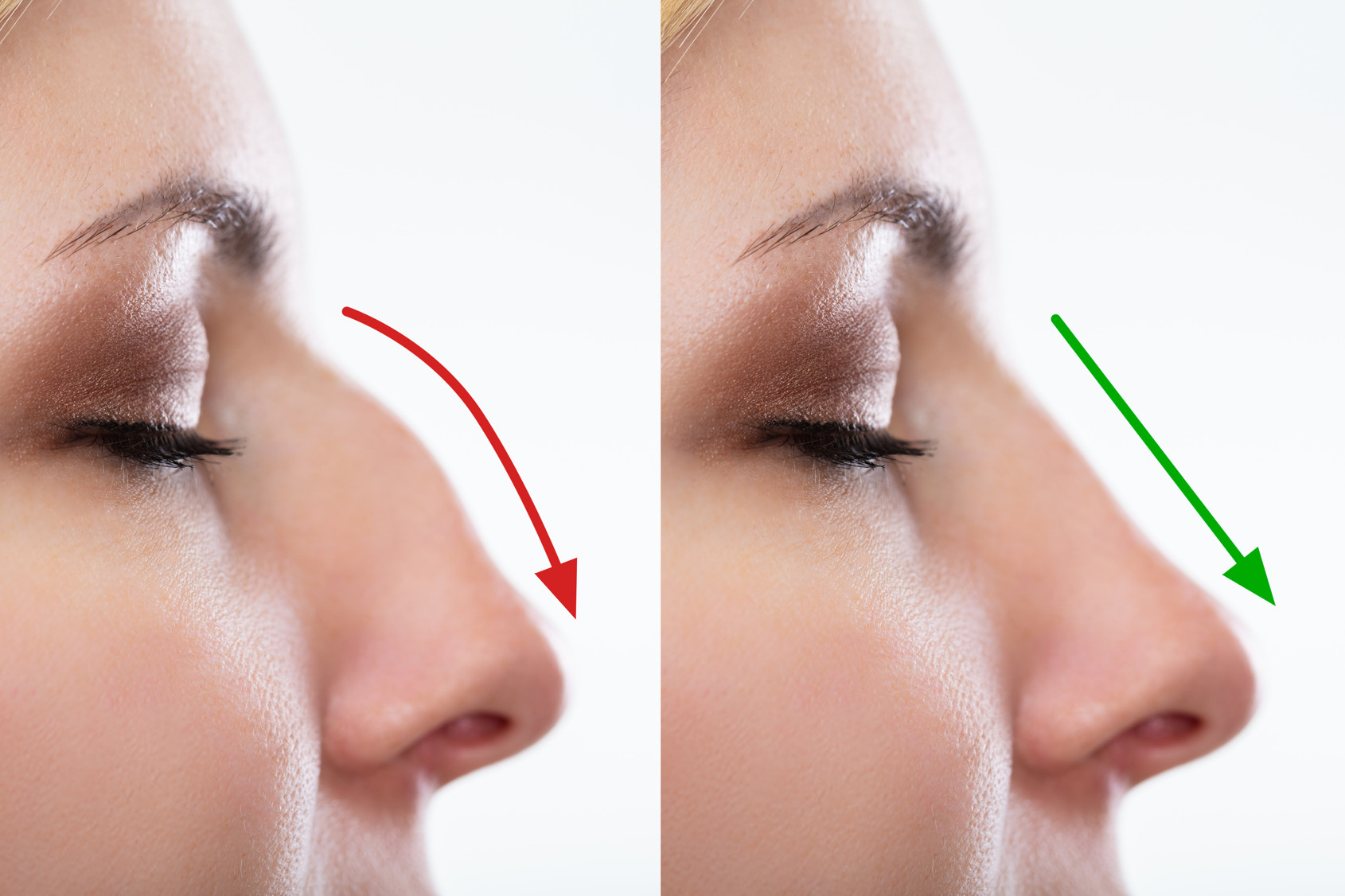
How Can You Prevent Rhinoplasty Scars?
Post-nose job surgery instructions are a great help in avoiding the formation of nose-reshaping surgery scars. As soon as you return home after nose job surgery, following the advised post-operative rhinoplasty procedure will to avoid scarring.
- Avoid touching your nose for at least two weeks after surgery to prevent infection and minimise scarring.
- Keep the area around your nose clean and dry, using mild cleansers and avoiding harsh chemicals or fragrances.
- Maintain a balanced diet rich in vitamins A, C, and E to support healthy tissue growth.
- Apply a cold compress on your nose multiple times a day to reduce swelling and inflammation.
- Gently massage the soft tissue around your nose with moisturiser or oil to help break down potential scar tissue.
- Stay on schedule with post-op check-ups with your surgeon to track your progress and catch any excessive scarring early, considering revision surgery if needed.

How Can You Minimise Rhinoplasty Scars?
If you can not prevent scar formation after a rhinoplasty procedure, don’t worry. These scars are not permanent and with best practices, you can enhance the rhinoplasty recovery process to say goodbye to your scars forever.
If you don’t practise these instructions, the scar will likely get worse. So, it is crucial to embrace good practices, so scars can be avoided and you can better enjoy the outcomes of your rhinoplasty surgery.
So what should be done to enhance rhinoplasty recovery? Follow these steps

Clean Incision Site
Mr. Golchin will give you full instructions on how to keep your incision site clean. It is important for patients to follow those guidelines exactly to keep bacteria, debris, and anything harmful away from your nose.
Avoid Strenuous Activity
You don’t want to disturb the cast or strain your nose after the rhinoplasty surgery, so patients should avoid activities like blowing your nose, heavy lifting, or doing anything that could lead to nose trauma, for at least one week.
Use Sunscreen
Avoid direct sunlight as much as you can as it can risk darkening scarring. If you have to step into the sun, wear sunscreen in the incision area to limit the damage.
Control Swelling
Swelling is natural but over swelling can pull apart the incision. So, you should minimise the swelling by using ice packs or any other safe method advised by the surgeon.
Get Immediate Help
Watch out for the signs of infection as it can worsen the healing process. If you experience consistent bleeding, puss, or fever, get medical help right away.
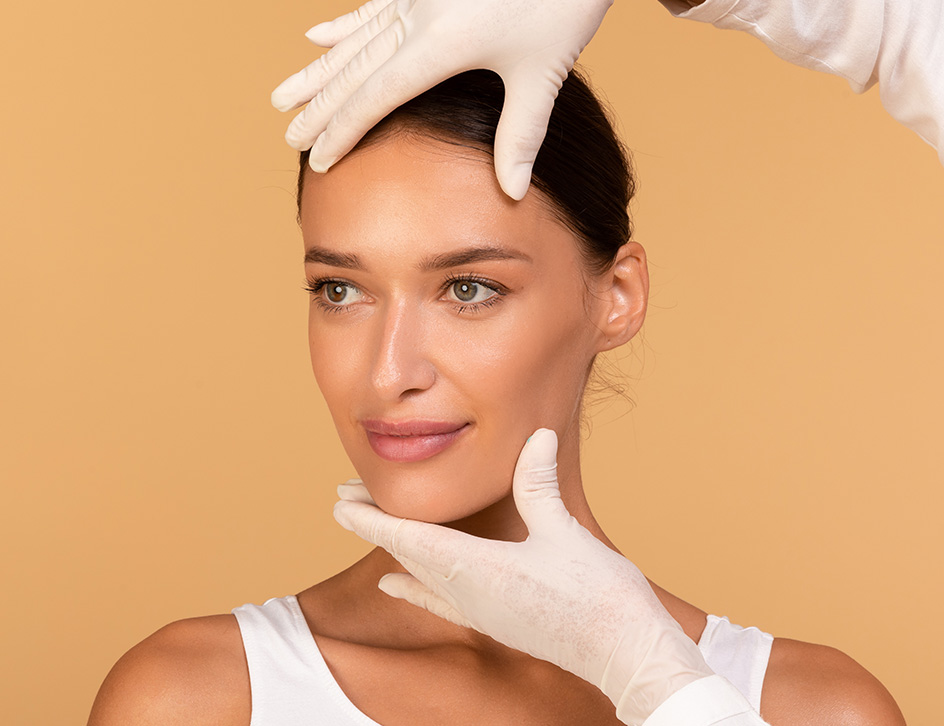
What if your Scar Does not Disappear?
While scar tissue softens over the course of a few years and eventually fades away. You won’t have to worry about scars much when your nose job is done by Mr Golchin. Most of the rhinoplasty procedure is performed on the interior of the nostrils where the scar is not a concern. Even if your desired shape of the nose requires open rhinoplasty surgery, it’s performed with utmost care to avoid scarring.
However, if any unusual situation occurs or you feel that the scar is not fading away, Mr Golchin also offers revision and dermabrasion procedures.
Final Words
Scars are without doubt discouraging, but the rhinoplasty surgery generates a minimal scar that is not often noticeable. You just have to make sure that nothing gets in the way of your natural healing process by practising post-operative care.
From consultation to post-operative care, Mr. Golchin delivers the best level of care to ensure you get your desired nose shape without getting scars. With his expertise and unparalleled service, we offer high-quality rhinoplasty London services. We ensure the worry of scar won’t overcome the excitement of getting your new charm. If you are looking for reliable nose surgery in London, book your consultation now.
BOOK CONSULTATION

I was very nervous about getting lip fillers for years, but I got recommended to Mr Golchin and I cannot recommend him enough! He made me feel at ease about the treatment and gave me exactly what I wanted! It was painfree and my results are amazing! – Sarah
SarahI have been attending Mr. Golchin at his clinic in Dublin for Botox & Fillers for quite a few years, with great results. I am never concerned about trying fillers in any new areas of my face or trying any new treatments suggested, as I have complete confidence in Mr. Golchin and his team. It’s very important to me to achieve a natural result while still noticing an obvious improvement and I am never disappointed. – Michelle
MichelleI contemplated rhinoplasty for a number of years and after extensive research I finally decided to go ahead with it in August 2017. To say it was a decision not taken lightly would be an understatement. I wanted the best results and the best surgeon and I can honestly say I got both. Mr Kambiz Golchin is a true professional and perfectionist and it is clear he takes great pride in his work. Mr Golchin established exactly what I wanted and delivered, surpassing my expectations. Bex
BexI had decided many months ago to get rhinoplasty and had since visited a number of the top surgeons in London, after being dissatisfied a friend referred Mr Golchin. From start to finish, including my pre operative care to my end result I could not be happier and would highly recommend Mr Golchin as a wonderful surgeon who has changed my life and I could not be happier with my new nose. – cmbrowne
C Browne

